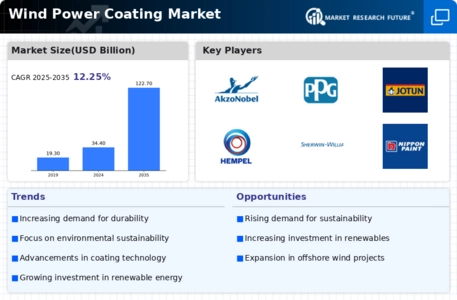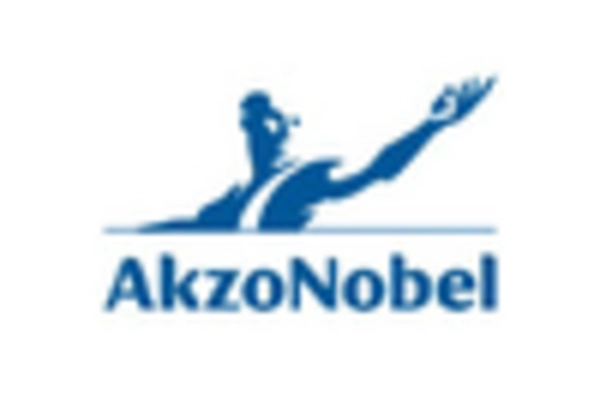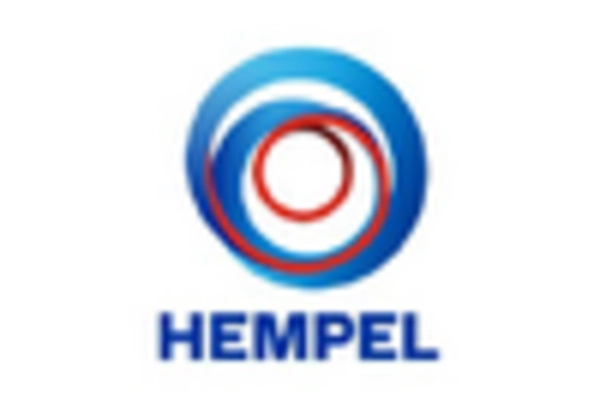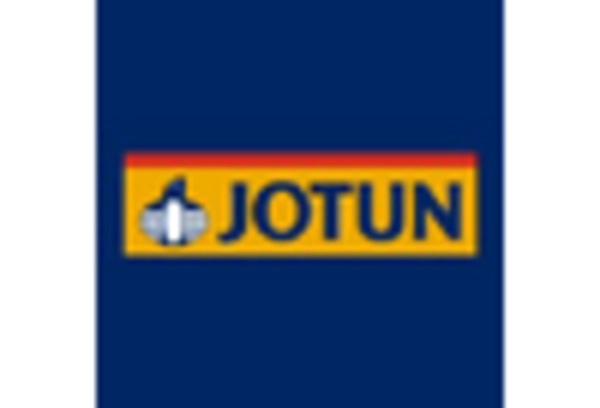The Wind Power Coating Market is currently characterized by a dynamic competitive landscape, driven by the increasing demand for renewable energy solutions and the need for durable, high-performance coatings that can withstand harsh environmental conditions. Key players such as AkzoNobel (Netherlands), BASF (Germany), and PPG Industries (United States) are strategically positioning themselves through innovation and regional expansion. AkzoNobel (Netherlands) has focused on enhancing its product portfolio with advanced coatings that offer superior protection against corrosion and UV degradation, thereby appealing to wind turbine manufacturers seeking longevity and reliability in their products. Meanwhile, BASF (Germany) has been investing in sustainable practices, aligning its operations with global environmental standards, which not only enhances its brand reputation but also meets the growing regulatory demands for eco-friendly solutions. PPG Industries (United States) has adopted a strategy of digital transformation, leveraging data analytics to optimize its supply chain and improve customer engagement, which is crucial in a market that increasingly values efficiency and responsiveness.
The business tactics employed by these companies reflect a concerted effort to localize manufacturing and optimize supply chains, which are essential in a moderately fragmented market. This fragmentation allows for a variety of players to coexist, yet the influence of major companies is significant, as they set benchmarks for quality and innovation. The collective strategies of these key players contribute to a competitive environment where agility and adaptability are paramount, particularly in response to fluctuating market demands and technological advancements.
In August 2025, AkzoNobel (Netherlands) announced the launch of a new line of wind turbine coatings designed specifically for offshore applications. This strategic move is particularly noteworthy as it addresses the unique challenges posed by marine environments, such as saltwater corrosion and extreme weather conditions. By focusing on this niche, AkzoNobel not only strengthens its market position but also demonstrates its commitment to innovation in protective coatings, which could lead to increased market share in the offshore wind sector.
In September 2025, BASF (Germany) unveiled a partnership with a leading wind turbine manufacturer to develop next-generation coatings that incorporate nanotechnology. This collaboration is significant as it aims to enhance the performance and durability of coatings, potentially setting new industry standards. The integration of nanotechnology could provide BASF with a competitive edge, allowing it to offer products that outperform traditional coatings in terms of longevity and environmental resistance.
In October 2025, PPG Industries (United States) reported a major investment in its digital supply chain capabilities, aimed at improving operational efficiency and reducing lead times for customers. This investment is indicative of a broader trend towards digitalization within the industry, as companies seek to leverage technology to enhance their competitive positioning. By streamlining its operations, PPG Industries is likely to improve customer satisfaction and strengthen its market presence.
As of October 2025, the Wind Power Coating Market is witnessing trends that emphasize digitalization, sustainability, and the integration of advanced technologies such as AI. Strategic alliances are increasingly shaping the competitive landscape, enabling companies to pool resources and expertise to drive innovation. Looking ahead, it appears that competitive differentiation will evolve from traditional price-based competition to a focus on innovation, technological advancements, and supply chain reliability. This shift suggests that companies that prioritize these areas will be better positioned to thrive in an increasingly competitive market.


















Leave a Comment